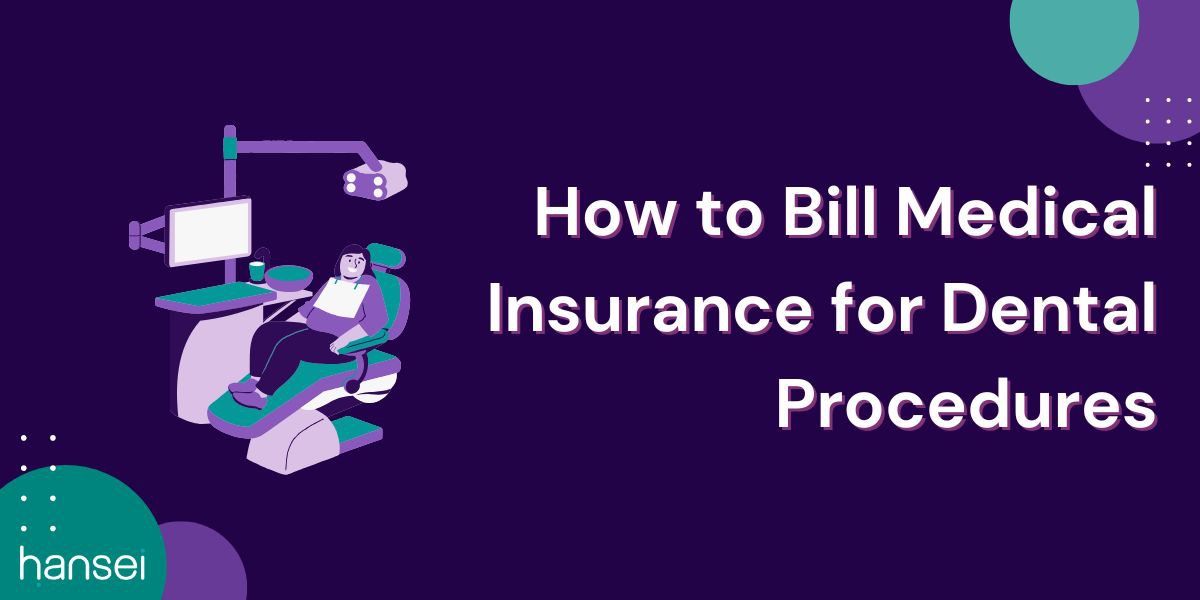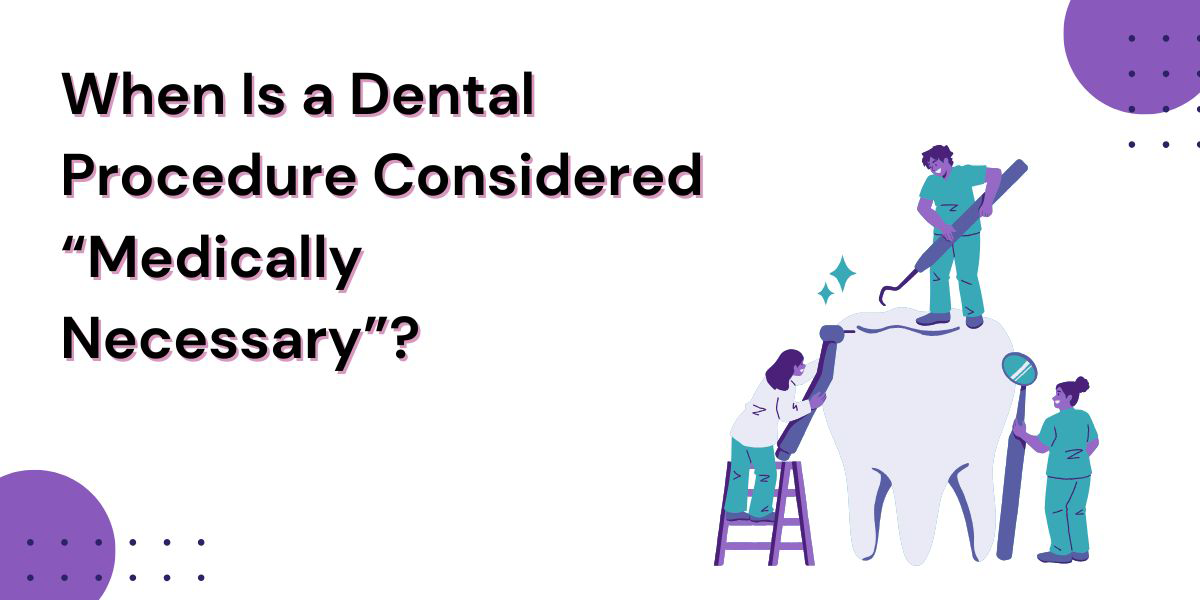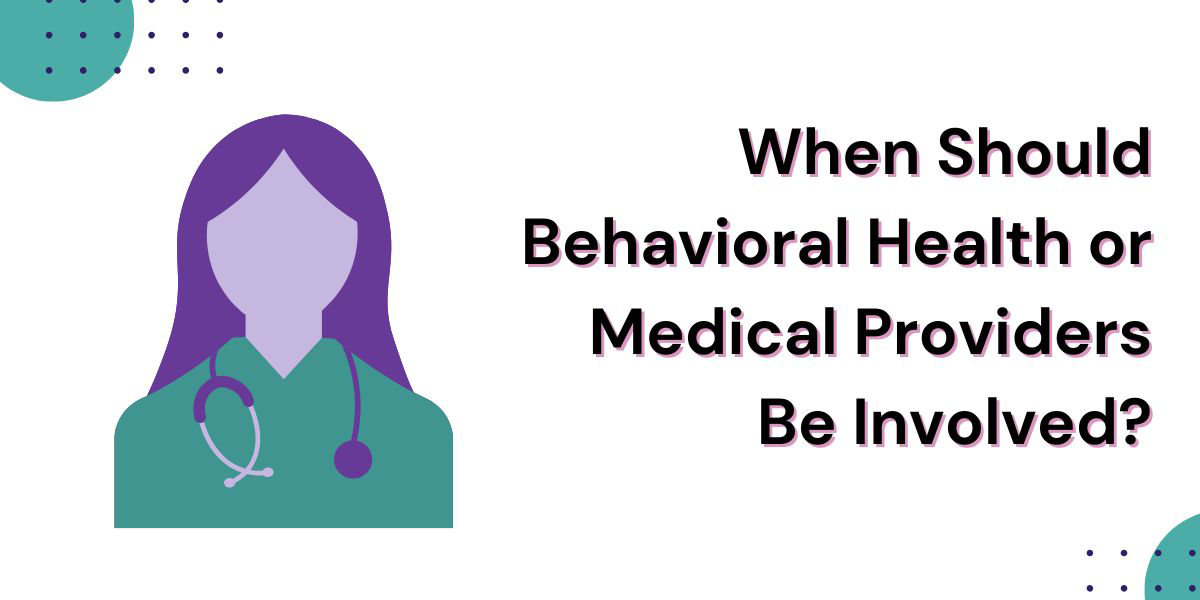Blog

When most people think about dental care, they assume it must be covered by dental insurance. However, in many cases—especially for procedures tied to trauma, systemic illness, or behavioral health—medical insurance can and should be billed instead.
At Hansei Solutions, we specialize in helping healthcare providers navigate complex billing landscapes, including the intersection of dental and medical insurance. In this article, we break down when and how to bill medical insurance for dental procedures—and why it can make a big difference in patient access and practice revenue.
Why Bill Medical Instead of Dental?
Medical insurance can often provide broader coverage and higher reimbursement than dental plans, especially for procedures that go beyond routine oral care. If a dental service is medically necessary, it may qualify for coverage under a patient’s health insurance policy—even if it’s performed by a dentist.
Common Examples:
- Oral surgery following an accident or injury
- Tooth extractions related to systemic disease or chemotherapy
- Treatment for obstructive sleep apnea (e.g., oral appliances)
- Temporomandibular joint (TMJ) disorder therapy
- Biopsies of suspicious lesions or pathology
- Pre-surgical dental clearance for transplant or cardiac patients
In behavioral health, certain patients in addiction recovery or psychiatric treatment may also require medically necessary dental intervention, particularly when poor oral health affects overall health outcomes.

When Is a Dental Procedure Considered “Medically Necessary”?
Medical necessity is the key to unlocking medical insurance coverage. To qualify, the dental service must:
- Be required to treat a medical condition (e.g., infection, trauma, cancer)
- Be supported by diagnostic evidence (X-rays, medical history, referrals)
- Be performed to improve function or health, not just aesthetics
Medical insurance won’t pay for purely cosmetic or elective dental services, but when teeth and oral structures are connected to broader health outcomes, billing medically becomes not only possible—but often essential.
Step-by-Step: How to Bill Medical Insurance for Dental Procedures
Get a Clear Diagnosis and Document Medical Necessity
Start with a detailed chart note that ties the dental condition to a diagnosable medical issue. Include:
- A written referral from a physician or specialist (if applicable)
- A diagnosis using ICD-10 codes
- Imaging or clinical evidence showing functional or systemic impact
Use Medical Coding Standards (Not Just Dental Codes)
You’ll need to switch from dental CDT codes to medical CPT and ICD-10 codes. For example:
- ICD-10 Codes:
- K08.1 – Loss of teeth due to trauma
- M26.60 – TMJ disorder
- G47.33 – Obstructive sleep apnea
- CPT Codes (for procedures):
- 41899 – Unlisted procedure, dentoalveolar structures
- 21085 – Oral appliance for sleep apnea
- 21248 – Reconstruction of mandibular defect
Many dental practices partner with billing experts to ensure correct coding and compliance. Hansei Solutions can assist with translating dental procedures into medical claim formats.
Verify Medical Insurance Eligibility
Before treatment begins, confirm that the patient’s medical insurance:
- Allows coverage for the procedure
- Does not require a referral or prior authorization
- Has out-of-network benefits (if you’re not credentialed)
Our team at Hansei frequently performs benefit verifications for providers—saving time and avoiding reimbursement delays.
Submit a CMS-1500 Medical Claim
Instead of the standard ADA dental form, use the CMS-1500 form to bill medical insurance. This form requires:
- The provider’s NPI and tax ID
- Accurate CPT and ICD-10 coding
- Modifier codes (if applicable)
- Place of service and rendering provider information
You may also need to include clinical notes, medical referrals, radiographs, and other documentation.
Track, Appeal, and Follow Up
Denials are common—but often reversible. Reasons for denial may include:
- Lack of documentation of medical necessity
- Coding mismatch
- Missing pre-authorization
- Out-of-network status
Appealing with the correct documentation and medical rationale can often overturn these denials. Hansei Solutions offers full denial management and appeals services to help providers recover revenue.

When Should Behavioral Health or Medical Providers Be Involved?
Medical-dental integration is growing, especially in behavioral health and trauma-informed care. Dental issues can impact:
- Nutritional health
- Medication compliance
- Pain management
- Self-esteem and recovery outcomes
If your facility provides mental health or addiction treatment and works with patients experiencing severe dental neglect, partnering with dental providers—and billing medical insurance when appropriate—can create better health outcomes and expanded reimbursement opportunities.
Hansei Can Help You Bridge the Medical-Dental Divide
Medical billing for dental procedures is complex, but the payoff is worth it—for your practice and your patients. With the right documentation, coding, and billing strategy, you can:
- Improve access to care
- Increase reimbursement for medically necessary services
- Reduce patient out-of-pocket costs
- Support whole-person health, especially in behavioral health settings
At Hansei Solutions, we help providers of all types—including dental, behavioral health, and multi-disciplinary clinics—navigate complex insurance landscapes with clarity and confidence.
Need help billing medical insurance for dental services?
Contact Hansei Solutions to learn how our experts can streamline your claims, improve your revenue, and support medically integrated care.

Ready to focus on providing healthcare? Let us lighten your load.
We’re here to address your pain points and create growth opportunities for your organization. We’re passionate about what we do, and it shows in every interaction. Learn what makes us tick and schedule a demo today.